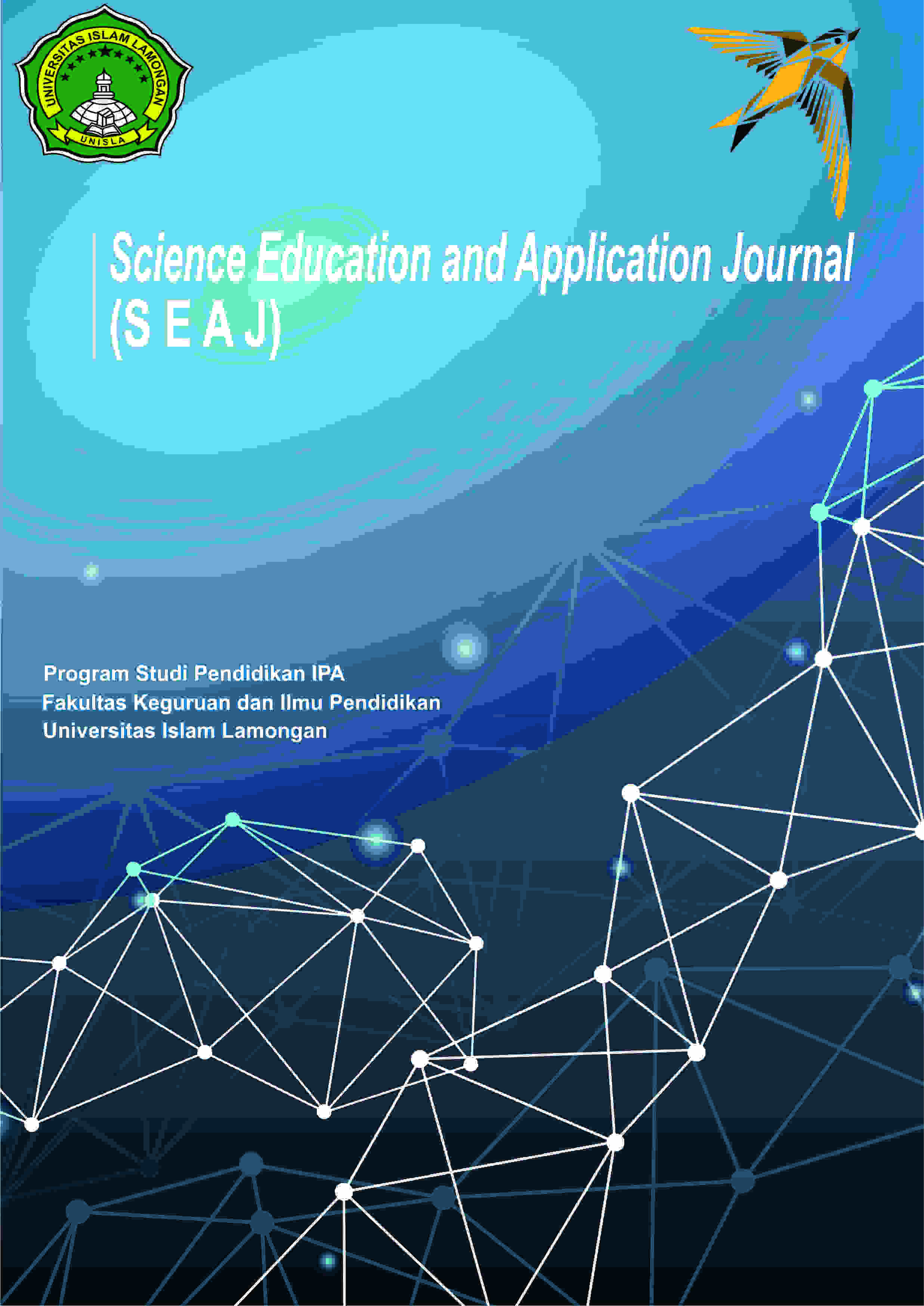Technologies and Materials for Carbon Dioxide Capture
DOI:
https://doi.org/10.30736/seaj.v1i2.147Keywords:
technology, material, CO2 adsorptionAbstract
This paper was aims to review the technologies and materials for CO2 capture. Carbon dioxide is one of the triggers for the greenhouse effect and global warming. Some methods to reduce CO2 are separation technologies include air capture, CO2 Capture Utilization and Storage (CCUS) and CO2 Capture and Storage (CCS) technology. CCS technology have several systems namely post-combution, pre-combustion and oxy-fuel combustion. Post-combution systems can be done in various systems including absorption, adsorption, membrane, and cryogenic. Adsorption proses for CO2 capture applied with porous material such us mesopore silica, zeolite, carbon, MOF dan COF. This review was described the advantages and disadvantages of each technology for CO2 capture. Materials for CO2 adsorption also descibed in this review.
Downloads
References
Oh, T.H. (2010). Carbon Capture and Storage Potential in Coal-fired Plant in Malaysia-a Review Renewable Sustainable Energy Rev. 14. 2697–2709.
Li, J.-R.dkk., (2011). Carbon dioxide capture-related gas adsorption and separation in metal-organic frameworks. Coordination Chemistry Reviews, 255. 1791-1823.
Yang, H. dkk., (2008). Progress in carbon dioxide and capture: A review. Journal of Enviromental Sciences, 20. 14-27.
Figueroa J. D., Fout T., Plasynski S., Mc. Ilvried H. dan Srivastava R. D., (2008), Advances in CO2 capture technology, The U.S. Department of Energy’s Carbon Sequestration Program, International Journal of Greenhouse Gas Control, 2l. 9–20.
Kintisch, E., (2014). Can Sucking CO2 Out of the Atmosphere Really Work, Columbia: MIT Technology Review.
Bielicki, J. M. dkk., (2014). Causes and financial consequences of geologic CO2 storage reservoir leakage and interference with other subsurface resources. International Journal of Greenhouse Gas Control, 20. 272-284.
Bennaucer, K., Gielen, D., Kerr, T. & Tam, C., (2008). CO2 Capture and Storage. International Energy Agency, p. 15.
Li, J.-R.dkk., (2011). Carbon dioxide capture-related gas adsorption and separation in metal-organic frameworks. Coordination Chemistry Reviews, 255. 1791-1823.
Miller, B.G., (2011) CO2 Capture dan Storage, In Clean Coal Engineering Technology, Butterworth-Heinemann, Boston, 483–511.
Pirngruber G. D., Guillou F., Gomez A. dan Clausse M., (2013), A theoretical analysis of the energy consumption of post-combustion CO2 capture processes by temperature swing adsorption using solid sorbents", International Journal of Greenhouse Gas Control, 14. 74–83.
Smith, N. dkk., (2013). Performance and Costs of CO2 Capture at Gas Fired Power Plants. Energy Procedia, 37. 2443-2452.
Cheung, O. dkk., (2013). “Adsorption kinetics for CO2 on highly selective zeolites NaKA and nano-NaKAâ€. Ahallied Energy, 112, hal. 1326-1336.
Pham T. D., Xiong R., Sdanler S. I. dan Lobo R. F., (2014) Experimental dan computational studies on the adsorption of CO2 dan N2 on pure silica zeolites. Microporous dan Mesoporous Materials, 185. 157–166.
Kazama, S. dan Haraya, K., (2013), Optimization of CO2 concentration captured by membrane technology - Possibility of reduction in CO2 capture energy dan cost, Energy Procedia, 37. 969–975.
Son W.J., Choi J.S. dan Ahn W.S., (2008), Adsorptive removal of carbon dioxide using polyethyleneimine-loaded mesoporous silica materials, Microporous dan Mesoporous Materials, 113. 31–40.
Zeleňák V., BadaniÄová M., Halamová D., ÄŒejka J., Zukal A., Murafa N. danGoerigk G., (2008), Amine-modified ordered mesoporous silica: Effect of pore size on carbon dioxide capture, Chemical Engineering Journal, 144. 336–342.
Hao G.P., Li W.C., Qian D. dan Lu A.H., (2010), Rapid Synthesis of Nitrogen-Doped Porous Carbon Monolith for CO2 Capture, Adv. Material, 22. 853–857.
Siriwardane R., Shen M., Fisher E., Poston J. danShamsi A,. (2001), Adsorption dan desorption of CO2 on solid sorbents, Journal of Energy & Environmental Research,1. 19–22.
Millward, A.R. danYaghi, O.M., (2005), "Metal−Organic Frameworks with Exceptionally High Capacity for Storage of Carbon Dioxide at Room Temperature", J. Am. Chem. Soc., 127. 17998–17999.
Furukawa, H. danYaghi, O. M., (2009), Storage of hydrogen, methane, dan carbon dioxide in highly porous covalent organic frameworks for clean energy applications, Journal of the American Chemical Society, 131. 8875–8883.
Susanti, Indri. (2019). Polysulfone Membrane with Zeolite Filler for CO2/CH4 Gas Separation: a Review. Science Education and Application Journal (SEAJ). 1 (1). 10-16.
Saha D., Deng S.G., (2010), Adsorption equilibrium and kinetics of CO2, CH4, N2O, and NH3 on ordered mesoporous carbon, J. Colloid Interface Sci. 345. 402-409.
Z.J. Zhang, W. Zhang, X. Chen, Q.B. Xia, Z. Li, (2010) . Adsorption of CO2 on zeolite 13X and activated carbon with higher surface area, Sep. Sci. Technol. 45. 710–719.
Liu Y., Yang Y., Zhou Y., Zhang Y., Gao M. and Pan H. (2012) Hydrogen storage properties and mechanisms of the Mg(BH4)2–NaAlH4 system. International Journal of Hydrogen Energy 37. 17137–17145
Susanti, I., and Widiastuti, N. (2019). Activation of Zeolite-Y Templated Carbon with KOH to Enhance the CO2 Adsorption Capacity. Malaysian Journal of Fundamental and Applied Science (MJFAS), 15 (2). 240-253.
Cavenati, S., Grande, C. A. & Rodrigues, A. E., (2004). Adsorption Equilibrium of Methane, Carbon Dioxide, and Nitrogen on Zeolite 13X at High Pressure. Journal of Chemical Engineering, 49. 1095-1101.
Walton K. S., Abney M. B. dan Douglas LeVan M., (2006), CO2 adsorption in Y dan X zeolites modified by alkali metal cation exchange, Microporous dan Mesoporous Materials, 91. 78–84.
Yu L., Gong J., Zeng C. dan Zhang L., (2013), Synthesis of binderless zeolite X microspheres dan their CO2 adsorption properties, Separation dan Purification Technology, 118. 188–195.
Zukal A., Arean C. O., Delgado M. R., Nachtigall P., Pulido A., Mayerová J. danČejka J., (2011), Combined volumetric, infrared spectroscopic dan theoretical investigation of CO2 adsorption on Na-A zeolite, MicroporousdanMesoporous Materials, 146. 97–105.
McEwen, J., Hayman, J.-D. & Yazaydin, A. O., (2013). A comparative study of CO2, CH4 and N2 adsorption in ZIF-8, Zeolit-13X and BPL activated carbon. Chemical Physics, 412. 72-76.
Downloads
Published
How to Cite
Issue
Section
License
Authors who publish with this journal agree to the following terms:
- Authors retain copyright and grant the journal right of first publication with the work simultaneously licensed under a Creative Commons Attribution-ShareAlike 4.0 International License that allows others to share the work with an acknowledgment of the work's authorship and initial publication in this journal.
- Authors are able to enter into separate, additional contractual arrangements for the non-exclusive distribution of the journal's published version of the work (e.g., post it to an institutional repository or publish it in a book), with an acknowledgment of its initial publication in this journal.
- Authors are permitted and encouraged to post their work online (e.g., in institutional repositories or on their website) prior to and during the submission process, as it can lead to productive exchanges, as well as earlier and greater citation of published work (See The Effect of Open Access).

This work is licensed under a Creative Commons Attribution-ShareAlike 4.0 International License.










